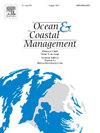社区感知与文化生态系统服务映射的相关性:来自奥里萨邦比塔卡尼卡野生动物保护区生物文化景观的经验教训
IF 4.8
2区 环境科学与生态学
Q1 OCEANOGRAPHY
引用次数: 0
摘要
围绕海岸和海洋保护的叙述主要集中在生态系统服务上,将自然视为利益的提供者,以塑造全球的管理实践。然而,沿海社区与这些生态系统之间的双向关系一直缺乏重视。这包括文化生态系统服务(CES)或它们所包含的非物质价值,即当地居民如何与这些沿海景观互动、感知和维持这些景观。本研究旨在探讨和了解社区对奥里萨邦比塔卡尼卡野生动物保护区(BKWS)的认知的相关性。采用公众参与式地理信息系统(PPGIS)方法,我们与119个当地利益相关者合作,以确定和评估与景观相关的非物质价值。调查内容包括社会人口统计信息、来自不同生产景观的生态系统服务、对景观变化的认识,以及对CES的评估,包括文化危害。居民们确定了59个地点,描绘了6个景观价值。利用插值技术,计算了六幅地图,以空间表征沿海社区感知到的不同CES。研究结果强调了非物质利益的重要性,其中宗教和审美价值尤为重要。回归分析表明,年龄、性别等因素显著影响非物质价值的升值。热点分析(Getis-Ord Gi *)在不同的生产景观中确定了集中的CES区域。通过将社区优先事项与生态目标结合起来,该研究为可持续红树林管理提供了一个具有复制潜力的模型,该模型可以通过促进沿海治理中生态弹性和文化保护的协同作用,为沿海保护和红树林恢复目标做出贡献。本文章由计算机程序翻译,如有差异,请以英文原文为准。
Relevance of community perceptions in mapping cultural ecosystem services: Lessons from bio-cultural landscape of Bhitarkanika Wildlife Sanctuary, Odisha
The narrative surrounding coastal and marine conservation has largely focused on ecosystem services, viewing nature as a provider of benefits, to shape management practices worldwide. However, there has been a lack of emphasis on the bidirectional relationship between coastal communities and these ecosystems. This includes the Cultural Ecosystem Services (CES) or non-material values they encompass, namely how local populations interact with, perceive, and sustain these coastal seascapes. The present study aimed to explore and understand the relevance of community perceptions for CES within Bhitarkanika Wildlife Sanctuary (BKWS) in Odisha. Employing a Public-Participatory Geographical Information System (PPGIS) approach, we engaged 119 local stakeholders to identify and evaluate non-material values associated with the landscape. The survey encompassed socio-demographic information, ecosystem services derived from different production landscapes, awareness about the landscape changes, and valuation of CES, including cultural disservices. The residents identified 59 locations depicting 6 landscape values. Using interpolation techniques, six maps were computed to spatially characterize the diverse CES perceived by coastal communities. Results highlighted the importance of non-material benefits, with religious and aesthetic values being particularly significant. Regression analysis indicated that factors such as age, gender, etc. significantly influenced the appreciation of non-material values. Hotspot analysis (Getis-Ord Gi∗) identified areas of concentrated CES across varied production landscapes. By aligning community priorities with ecological objectives, the study provides a model with replication potential for sustainable mangrove management that can contribute to coastal conservation and mangrove restoration goals by promoting the synergy of ecological resilience and cultural preservation in coastal governance.
求助全文
通过发布文献求助,成功后即可免费获取论文全文。
去求助
来源期刊

Ocean & Coastal Management
环境科学-海洋学
CiteScore
8.50
自引率
15.20%
发文量
321
审稿时长
60 days
期刊介绍:
Ocean & Coastal Management is the leading international journal dedicated to the study of all aspects of ocean and coastal management from the global to local levels.
We publish rigorously peer-reviewed manuscripts from all disciplines, and inter-/trans-disciplinary and co-designed research, but all submissions must make clear the relevance to management and/or governance issues relevant to the sustainable development and conservation of oceans and coasts.
Comparative studies (from sub-national to trans-national cases, and other management / policy arenas) are encouraged, as are studies that critically assess current management practices and governance approaches. Submissions involving robust analysis, development of theory, and improvement of management practice are especially welcome.
 求助内容:
求助内容: 应助结果提醒方式:
应助结果提醒方式:


